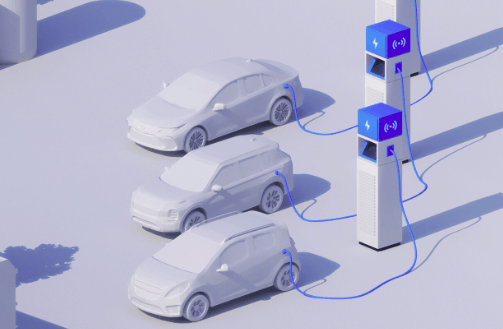
Do electric vehicles charge while driving?
Some electric vehicles may charge while driving, a technique known as regenerative braking. Regenerative braking utilises energy that would otherwise be wasted while braking to charge the battery.
When the driver hits the brakes or takes their foot off the accelerator, the car’s electric motor transforms into a generator, converting the vehicle’s kinetic energy into electricity, which is then stored in the battery. This can extend the range of an electric vehicle and minimize the requirement for external recharge.
However, regenerative braking alone is insufficient to fully charge an electric vehicle, and the vehicle must still be hooked into a charging station to fully charge the battery. Furthermore, the quantity of energy recovered by regenerative braking is affected by a variety of parameters such as vehicle speed, road conditions, battery state of charge, and vehicle design.
Furthermore, some modern electric vehicles include wireless charging, which allows the vehicle to charge while parked over a wireless charging pad without the need to plug in. This is a novel technology that is not yet generally available.
Do electric cars lose charge when parked?
Yes, electric cars can lose charge when parked, due to a phenomenon called “standby power loss.” Standby power loss occurs when the electric car’s battery continues to lose power even when the car is not being driven.
The amount of standby power loss can vary depending on several factors, such as the temperature, the battery’s state of charge, and the car’s systems that are left on (such as the infotainment system, climate control or parking assist systems)
The standby power loss can be reduced by:
- Park the car in a garage or covered area to protect it from extreme temperatures.
- Make sure to unplug the car from the charger once it’s fully charged.
- If possible, avoid leaving unnecessary systems on when the car is parked.
- Park the car in a way that the wheels are not touching the ground.
- Use the “sleep mode” function if your car has one, it reduces the power consumption when the car is not in use for a longer period of time
It’s importan
What is the quickest way to fully charge an electric vehicle?
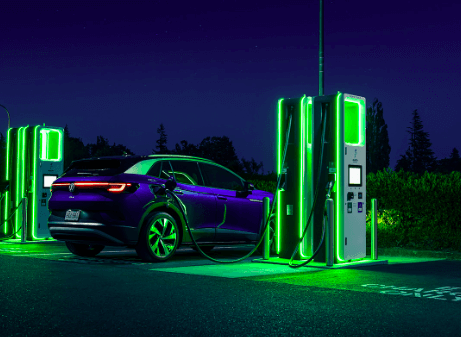
The quickest time to fully charge an electric car is determined on the kind of charging station and the battery capacity of the vehicle.
A DC fast charger is the quickest sort of charging station now available, and it uses direct current (DC) to charge the car’s battery. These chargers can deliver a high power output of up to 350 kW, allowing certain electric vehicles to be charged to 80% in as little as 20-30 minutes. Not all electric vehicles, however, are compatible with these high-power charging stations, and others require lower power levels.
Tesla Superchargers, a form of DC fast charger, can charge a Tesla Model 3 Long Range to 80% in around 45 minutes.
The Level 3 AC charger is another form of rapid charger that uses alternating current (AC) to charge the car’s battery. These chargers can deliver up to 50 kW of electricity, which is enough to charge certain electric vehicles to 80% in about an hour.
It is crucial to remember that charging times might vary based on the vehicle, battery condition, temperature, and other factors.
Furthermore, the quickest charging time is not always ideal because it might have an effect on battery health and longevity.
Will electric vehicles ever be able to go 1000 miles?
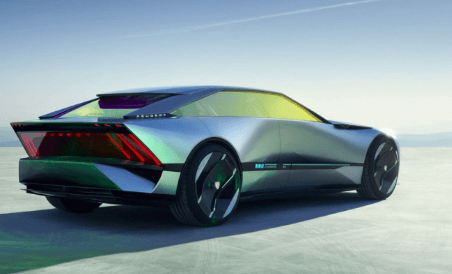
It is feasible that electric automobiles could someday be able to go more than 1000 miles on a single charge, although this is a big technical hurdle at the moment.
Electric vehicles can presently go 200-350 kilometers on a single battery. Improving battery energy density is one of the most significant approaches to extend the range of electric vehicles.
New battery technologies are being researched, such as solid-state batteries, which are projected to have a better energy density than existing lithium-ion batteries, allowing for a range of over 1000 miles on a single charge.
However, it is crucial to highlight that these new technologies are still in the early phases of research, and it will take time for them to be marketed and integrated into electric vehicles.
Furthermore, reaching such a long range would necessitate a large increase in the size and weight of the battery pack, which would have an influence on the weight, size, cost, and performance of the vehicle.
It’s also worth noting that high range isn’t necessarily required or desirable; issues like cost, weight, and vehicle size must all be considered when weighing the trade-offs of range and other attributes.
What happens if an electric vehicle runs out of energy while on the road?
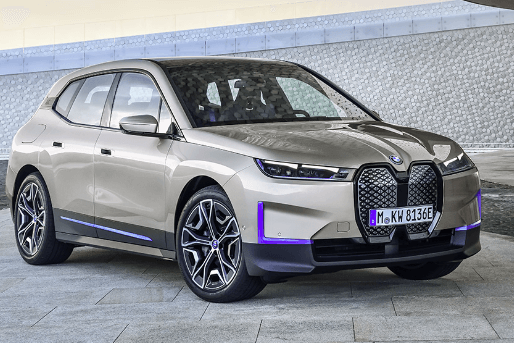
If an electric vehicle runs out of energy while on the road, it will come to a halt and will be unable to drive under its own power. This is known as “range anxiety,” and it may be a source of stress for electric vehicle owners, particularly when driving long distances or in places with inadequate charging infrastructure.
If an electric car owner’s vehicle runs out of power while on the road, he or she has a few options:
Request a tow truck:
The owner can request a tow truck to transport the vehicle to a charging station or to their destination.
However, this is a costly option that may not be covered by the vehicle’s warranty.
Mobile charging:
Companies who provide mobile charging services will come to the stranded car and supply enough electricity to get it to the nearest charging station.
Request a rescue service:
Some automobile manufacturers and charging networks provide roadside assistance, which might include dispatching a truck to transport the vehicle to the nearest charging station.
Locate a local charging station:
The motorist may identify a nearby charging station and arrange appropriately using applications and websites.
It is crucial to remember that as the electric car industry expands and charging infrastructure expands, the likelihood of running out increases.
Can you jump start an electric vehicle?
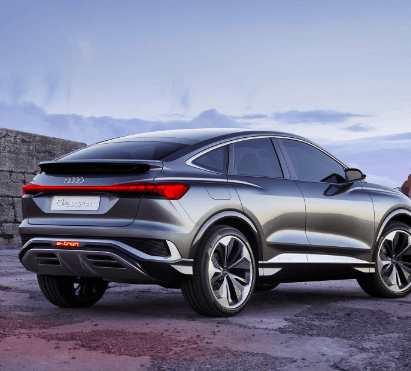
It is not suggested to “jump start” an electric car by connecting it to the battery of another automobile, as this might be harmful and damage the electric car’s electrical systems.
Electric vehicles contain a high-voltage battery pack and power electronics that are not intended to be linked to the electrical systems of other vehicles. Jump starting an electric car may result in damage to the battery, power electronics, and other components, as well as the risk of electric shock or fire.
If the battery in an electric vehicle is fully dead, it must be charged using a charging station or a portable charger. Some electric vehicles contain a “Battery Management System” that may be utilized to jump start the vehicle with a low-voltage portable charger. This capability, however, is not present in all electric vehicles, and it is suggested that before attempting to jump start the electric vehicle, read the vehicle’s handbook or contact the manufacturer.
It is also worth noting that certain electric vehicles include a feature known as “tow mode,” which allows the vehicle to be pulled without causing harm to the electric drivetrain. If the automobile needs to be towed, this option should be used.
Note that standby power loss will not completely drain the electric car’s battery, but it can reduce the car’s range and make it less convenient to use, especially if the car is parked for a long period of time.
Is it possible to push an electric car if it breaks down?
Pushing an electric car if it breaks down is typically not suggested since it is unsafe and can harm the electric car’s electrical systems. Electric vehicles are equipped with a high-voltage battery pack and power electronics that are not intended to be driven by hand. Pushing an electric vehicle might harm the battery, power electronics, and other components, as well as pose a risk of electric shock or fire.
It is also worth noting that certain electric vehicles include a feature known as “tow mode,” which allows the vehicle to be pulled without causing harm to the electric drivetrain. If the automobile needs to be towed, this option should be used.
The driver must enable the function before towing, and the vehicle must be hauled in the proper manner (front wheel drive, rear wheel drive, or four wheel drive) and at a low pace. Before attempting to tow the electric vehicle, see the owner’s handbook or contact the manufacturer.
What happens if an electric car falls in water?
An electric car that falls into water can be a serious and dangerous situation, as it can cause damage to the car’s electrical systems and create a potential risk of electric shock or fire.
It is important to remember that water and electricity do not mix, and coming into contact with water can cause serious damage to the car’s battery, power electronics, and other electrical components. If an electric car falls into water, the following steps should be taken:
- Turn off the car: If the car is still running, turn it off immediately to prevent further damage to the electrical systems.
- Evacuate the car: Get out of the car as soon as possible and move to a safe location.
- Call for help: Call for emergency services, such as the police and a tow truck, and inform them of the situation.
- Do not attempt to start the car: Do not attempt to start the car or move it until it has been inspected by a professional.
- Have the car inspected by a professional: An electric car that has been submerged in water should be inspected by a professional mechanic who is trained to work on electric cars. The car will need to be completely dried out and the battery and other electrical components will need to be inspected and possibly replaced if they were damaged by water.
It’s also important to note that electric cars are designed to be safer against water than internal combustion engine cars, but still it’s not recommended to drive them on flooded roads or in other water conditions that can cause damage to the car’s systems.
Are electric vehicles safer in a collision?
In the case of a collision, electric vehicles have significant safety benefits over regular internal combustion engine vehicles.
One of the most significant advantages of electric vehicles is their weight distribution. Heavy battery packs in the floor of electric vehicles can lower the car’s center of gravity and increase stability. This can reduce the likelihood of the automobile rolling over in the case of a collision.
Furthermore, the absence of a powerful internal combustion engine in the front of the automobile can increase overall crash safety by lowering the chance of engine penetration into the passenger compartment.
Another advantage of electric vehicles is that they lack the same sort of fuel system as internal combustion engine vehicles, which reduces the chance of a fire in the case of a collision.
It is important to note, however, that the safety of an electric car in an accident is partly dependent on the design and construction of the individual automobile, as well as the safety systems that it contains. Electric cars can have the same safety features as regular automobiles, such as airbags, seat belts, and anti-lock brakes, but they can also include extra features, like as regenerative braking, that can assist to lessen the chance of an accident.
Do electric vehicles charge while driving?
- Can an electric SUV tow cargo? What are the pros and cons of Electric SUVs?.
- Top Leading Lithium exporters in the world this 2023?
- What is a lithium ion battery? Everything you should know about lithium ion batteries.
- How to maintain bike chain. Is dry lube better than wet lube?
- Are flying cars legal? What are the Advantages and Disadvantages of flying cars?






